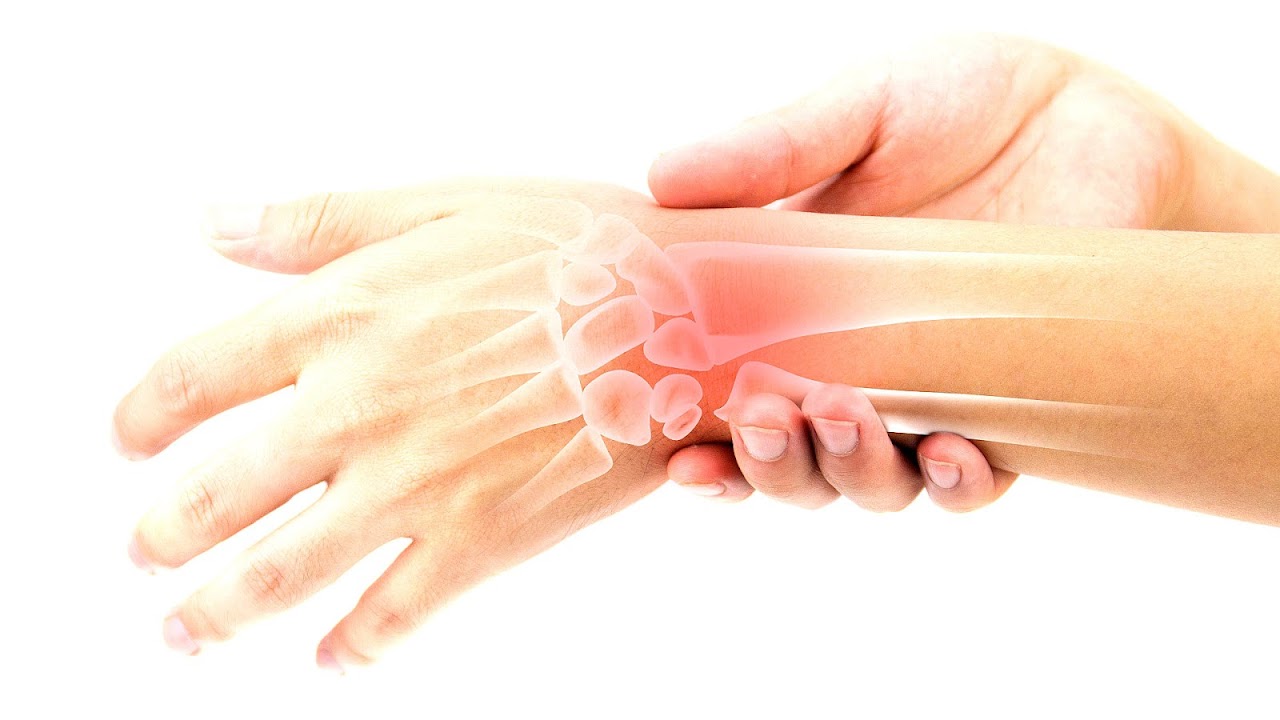
Stenosing tenosynovitis (also known as trigger finger or trigger thumb) is a painful condition caused by the inflammation (tenosynovitis) and progressive restriction of the superficial and deep flexors fibrous tendon sheath adjacent to the A1 pulley at a metacarpal head. Repetitive forceful compression, tensile stress, and resistive flexion, causes inflammation, swelling, and microtrauma, that results in thickening (commonly a nodular formation) of the tendon distal to the pulley and stenosis of the tendon sheath leading to a painful digital base, limitation of finger movements, triggering, snapping, locking, and deformity progressively.
Patients report a popping sound at the proximal interphalangeal joint (PIP), morning stiffness with/without triggering, delayed and sometimes painful extension of the digit, and when more advanced, a locking position that requires manipulation to extend the affected finger. This condition more commonly affects the middle and ring fingers (occasionally the thumb), and the flexor rather than extensor tendons in the hand.
In rheumatic trigger finger (or in diabetes), more than one finger may be involved. Cases of stenosing peroneal tenosynovitis, have been reported where the patient presents with pain over the lateral malleolus, both with active and passive range of motion and no physical of radiographic evidence of instability.

Maps, Directions, and Place Reviews
Signs and symptoms
Stenosing tenosynovitis often presents with a painful and swollen thumb with limited range of motion, or a ring finger or middle finger with similarly limited motion. There is often a feeling of catching when the thumb is flexed. In the ring and middle fingers, often a nodule can be felt when you press the area of the hand where the palm meets the finger.

Causes
Stenosing tenosynovitis is most commonly caused by overuse from chronic repetitive activities using the hand or the involved finger. Examples include work activities (e.g., computer use, materials handling) or recreational activities (e.g., knitting, golf, racket sports). Carpenters who use hammers suffer from this as well as those who continuously grip wood or other materials when cutting them due to having to use your hands as a clamp to hold things in place.
Primary stenosing tenosynovitis can be idiopathic, occurring in middle age women more frequently than in men, but can present also in infancy.
Secondary stenosing tenosynovitis can be caused by disease or entities that cause connective tissue disorders including the following:
- Rheumatoid arthritis and psoriatic arthritis--therefore the clinician must assess the hands for rheumatologic deformities.
- Gout
- Diabetes mellitus
- Amyloidosis
- Systemic lupus erythematosus
Others causes may include the following:
- Direct trauma to the site
- During the postpartum period
- Congenital

Diagnosis
No specific work up is defined. Stenosing tenosynovitis is a clinical diagnosis. However, if rheumatoid arthritis is suspected, laboratory evaluation of is granted (e.g. rheumatoid factor). Imaging studies are not needed to diagnose the condition. However, they can be valuable adjuvants to achieve a diagnosis. An ultrasound or MRI ( the most reliable study) can demonstrate increased thickness of the involved tendons. Thickening and hyper-vascularization of the pulley are the hallmarks of trigger fingers on sonography.
Differential diagnosis
- Triggering at decussation of superficial flexor over the deep flexor
- MP joint locking
- Flexor digitorium profundus avulsion/rupture
- Extensor tendon rupture
- Failure of digit extension from chronic dislocation of the metacarphophalangeal
- Posterior interosseous nerve syndrome
Two common diagnoses fall into this category
- DeQuervain's Syndrome (affecting the first dorsal compartment of the wrist)
- Trigger finger (Occurs when a fibrous nodule develops in the digital flexor tendon)

Management
Splinting, non-steroidal anti inflammatory drugs (NSAIDs), and corticosteroid injections are regarded as conservative first-line treatments for stenosing tenosynovitis. However, NSAIDs have been found to be ineffective as a monotherapy. Early treatment of trigger thumb has been associated with better treatment outcomes. Surgical treatment of trigger thumb can be complicated by injury to the digital nerves, scarring, tenderness, or a contracture of the joint. A significantly higher rate of symptom improvement has been observed when surgical management is paired with corticosteroid injections when compared to corticosteroid injections alone.
Occupational therapy is based on relieving the symptoms and reducing the inflammation. Overall cure rate, for dutifully applied non-operative treatment, is over 95% [citation needed]. Several modalities of treatment exists, depending on the chronicity and severity of the condition.
- Modification of hand activities
- Exercise & stretching
- Local heat
- Extension splinting during sleep (custom metacarpophalangeal joint (MCP joint) blocking splint, which has reported better patient's symptomatic relief and functionality and a distal interphalangeal (DIP) joint blocking splint)
Treatment consists of injection of methylprednisolone often combined with anesthetic (lidocaine) at the site of maximal inflammation or tenderness. The infiltration of the affected site can be performed blinded or sonographically guided, and often needs to be repeated 2 or three times to achieve remission. An irreducibly locked trigger, often associated with a flexion contracture of the PIP joint, should not be treated by injections.
- Transection of the fibrous annular pulley of the sheath
For symptoms that have persisted or recurred for more than 6 months and/or have been unresponsive to conservative treatment, surgical release of the pulley may be indicated. The main surgical approaches are percutaneous release and open release. The percutaneous approach, is preferred in some centers due to its reported shorter time of recuperation of motor function, less complications, and less painful. Complication of the surgical management include, persistent trigger finger, bowstringing, digital nerve injury, and continued triggering.
Of note, diabetes seems to be a poor prognostic indicator for nonoperative treatment and may develop stiffness after surgical release.
Source of the article : Wikipedia








EmoticonEmoticon